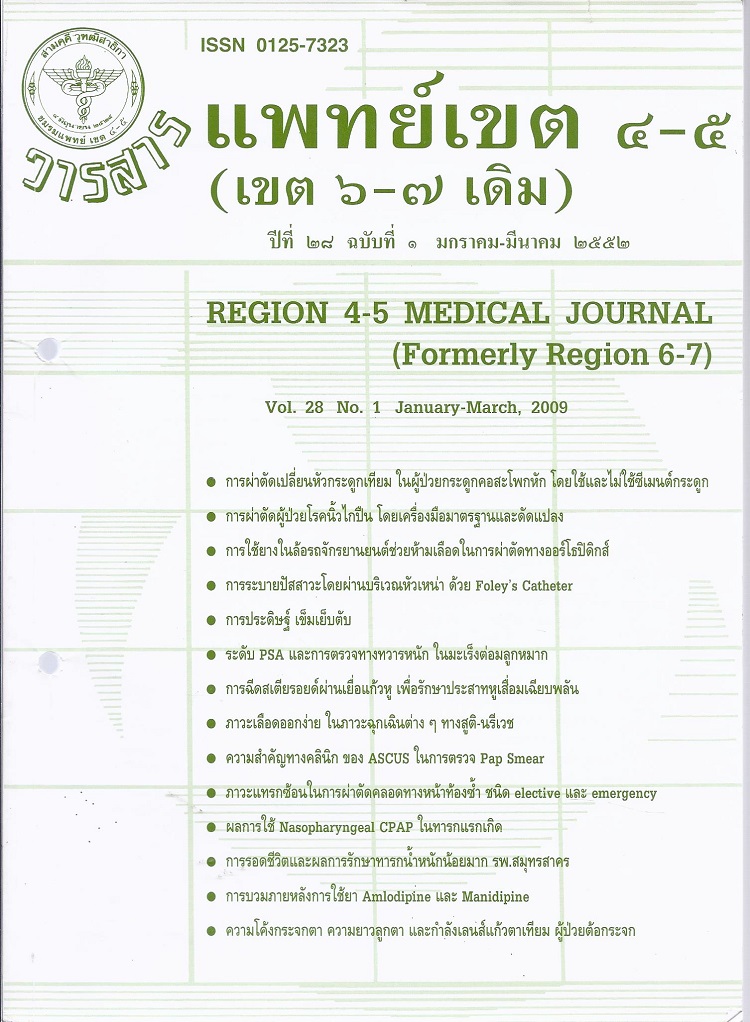การรอดชีวิตและผลการรักษาทารกน้ำหนักน้อยมากในโรงพยาบาลสมุทรสาคร
คำสำคัญ:
ทารกแรกเกิดน้ำหนักน้อยบทคัดย่อ
Objectives : To determine the survivals, outcomes and perinatal risks of mortality among VLBW infants born in Samutsakorn Hospital.
Materials and methods : This is a retrospective study. Data were collected from medical records of all infants with gestational age more than 26 weeks and birth weight less than 1,500 grams born in Samutsakorn Hospital during the 2 years period between June 1st 2006 and May 31st 2008. Antenatal history, perinatal data, neonatal outcome and complication of infants at hospital discharge were included for analysis.
Results : One hundred and one infants with birth weight between 600-1,490 grams were identified (8.7/1,000 live birth). Over all survival rate of very low birth weight (VLBW) infants and extremely low birth weight (ELBW) infants were 79% and 43% respectively. The survivals improved with the increasing of birth weight. The major causes of death were respiratory distress syndrome (RDS) and sepsis. The complication of survivors to hospital discharge was 21%. The major complications were bronchopulmonary dysphasia (BPD) and retinopathy of prematurity (ROP). Perinatal risks of mortality among VLBW infants included gestational age < 28 weeks (P = 0.001), ELBW (P < 0.001), Apgar score at 5 minutes ≤ 5 (P = 0.001) and need endo tracheal intubation in delivery room (P = 0.001).
Conclusion : The survivals and outcomes among very low birth weight infants born in Samutsakorn Hospital is acceptable. The mortality of extremely low birth weight infants is still high. Improving care for mothers and infants in order to reduce the mortality and complication should be further studied and encouraged.
ดาวน์โหลด
เผยแพร่แล้ว
รูปแบบการอ้างอิง
ฉบับ
ประเภทบทความ
สัญญาอนุญาต
ลิขสิทธิ์บทความเป็นของผู้เขียนบทความ แต่หากผลงานของท่านได้รับการพิจารณาตีพิมพ์ลงวารสารแพทย์เขต 4-5 จะคงไว้ซึ่งสิทธิ์ในการตีพิมพ์ครั้งแรกด้วยเหตุที่บทความจะปรากฎในวารสารที่เข้าถึงได้ จึงอนุญาตให้นำบทความในวารสารไปใช้ประโยชน์ได้ในเชิงวิชาการโดยจำเป็นต้องมีการอ้างอิงถึงชื่อวารสารอย่างถูกต้อง แต่ไม่อนุญาตให้นำไปใช้ในเชิงพาณิชย์




